Thin winding streets lined with orange trees, the smell of orange blossoms surrounding you, ancient tile-work facades on brightly painted buildings in ochre and curry and mustard. The sheer ornateness of the city suggests a history much larger than the city seems. The sky dominated by the largest gothic cathedral in Europe. Where the moorish past could not be rewritten by the Christian conquerors. It still lives in the food, in the architecture, and in the culture. The social locals pack cafes and bodegas beyond capacity each night as they enjoy their late dinners, here usually 8:30pm or later. The style of food is tapas, small shareable plates designed to be eaten with a drink, often standing at a tall table or at the bar, then off to the next location, or have a few more for a meal. Everyone seems to know what each place does best.
I absolutely fell in love with Seville. We spent a week here and I was definitely not ready to go. There is so much to explore and the food and wine is amazing. Oh, and did I mention it’s affordable? You can score a decent bottle of wine for $3 and we were often walking away from some of our favorite meals for around $20 or less with a couple drinks each under our belt. (A little research helps in this department. The local spots are about half the price of tourist places. But even those were cheaper than all of the European places we’ve been recently.) A tapas dish is around 3.5 euros and sharing four dishes between two people is usually a pretty good meal.
We came at the perfect time in early March before the weather gets hot and when the orange trees bloom. Absolutely magical. I will now forever associate orange blooms with Seville.
Walking around town
Like most of my favorite cities there’s never a dull moment walking around Seville. The winding stone streets stretched like veins across the city center opening up unexpectedly into small squares or enormous church courtyards with fountains. Clusters of bars and cafes absolutely everywhere brimming with lively conversations and families. Lush gardens and modern art. Seville feels like a city designed to be lived in unlike many Americans cities that seem to be designed to work in. Everything seems oriented on the social, the public square, the pedestrian walkways, the broad casual spaces and walkways along the river. Groups of people biking and skating together throughout the city. Old couples zooming down the street on public electric skooters. The extremely social nature of the way people eat. I was drawn in immediately. Though mid summer I might be singing a different tune.
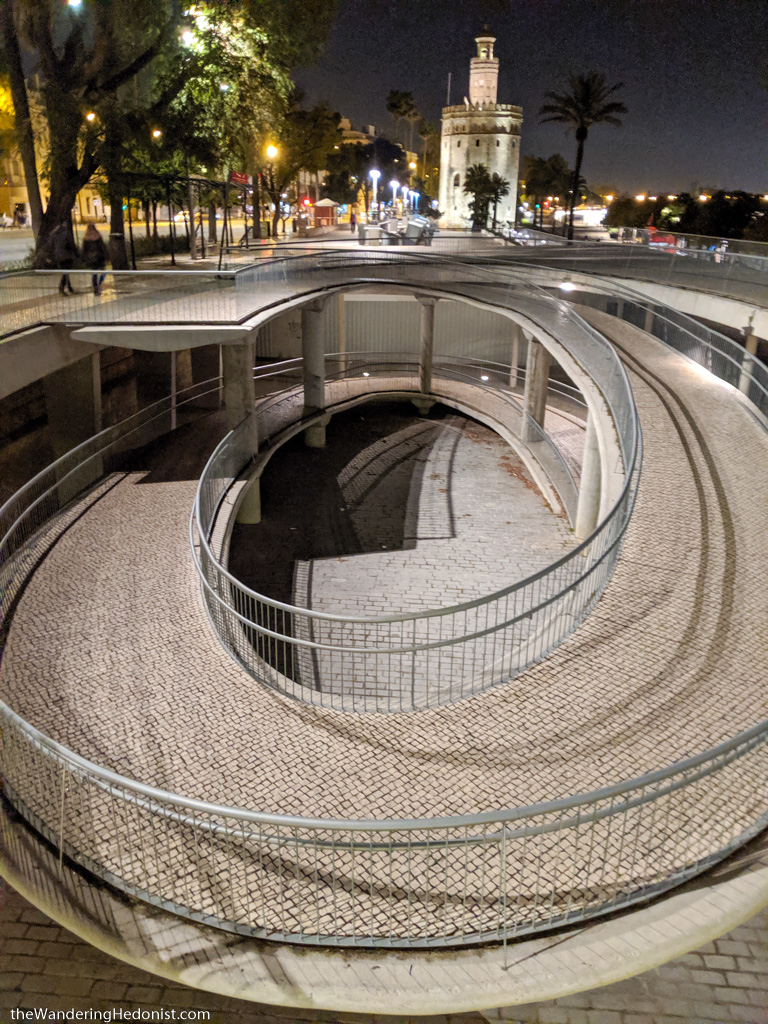
They had these cool circular ramps going down to the waterfront every so often. I watched a couple drive up on some of the ubiquitous electric scooters across town.
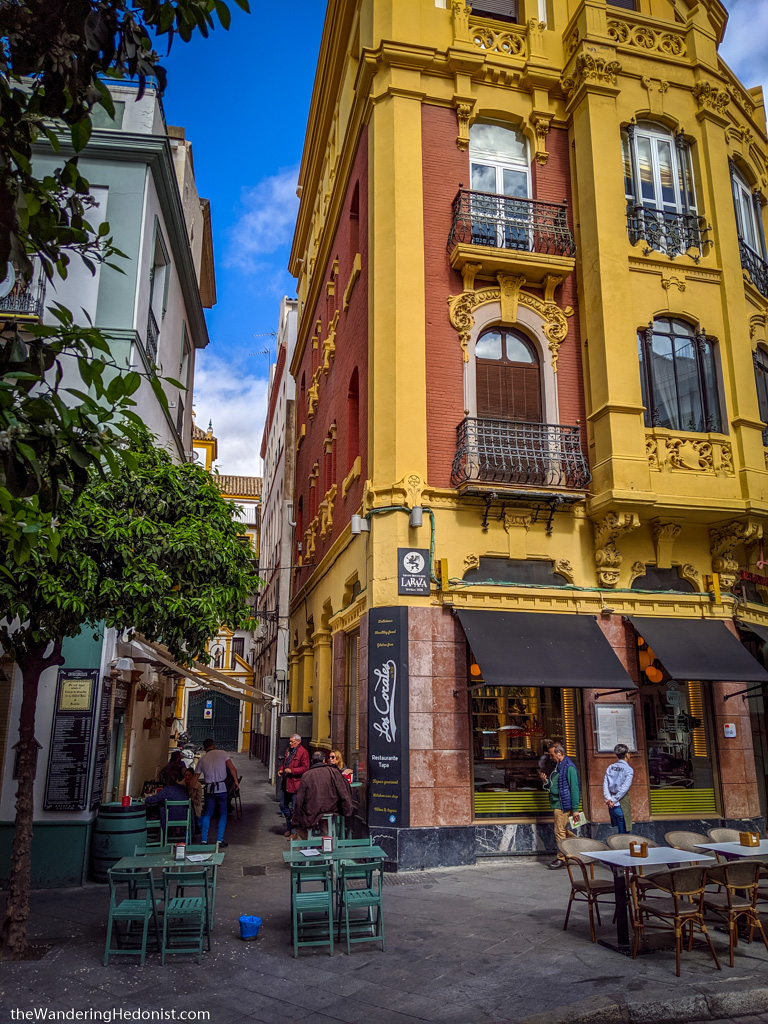
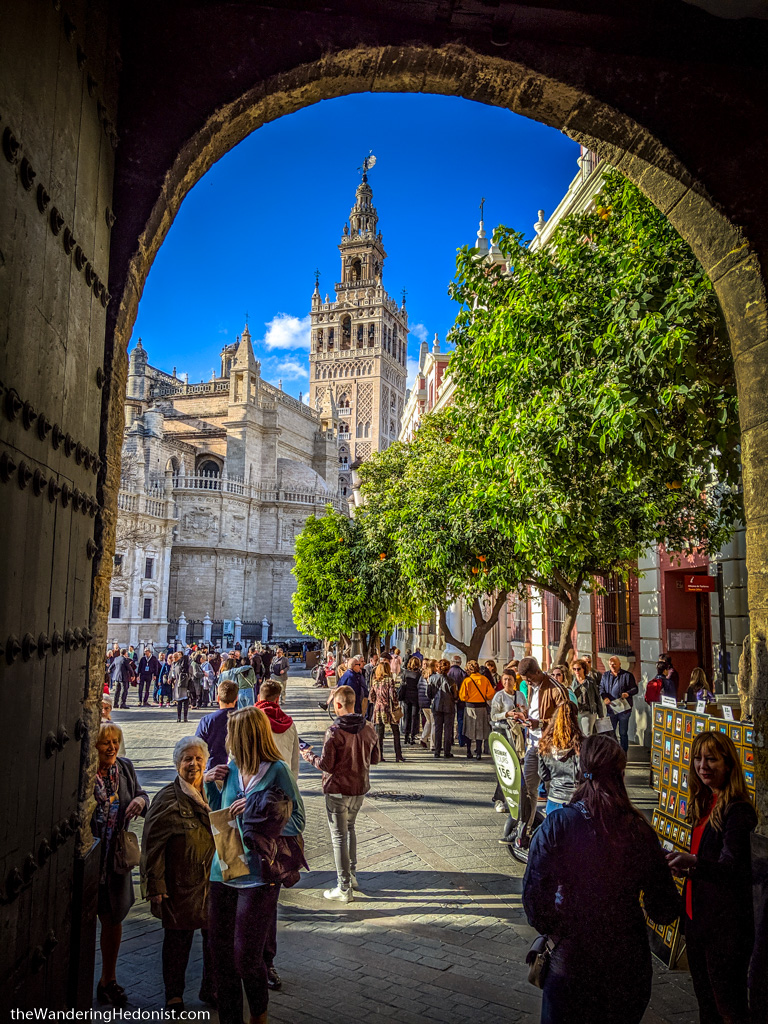
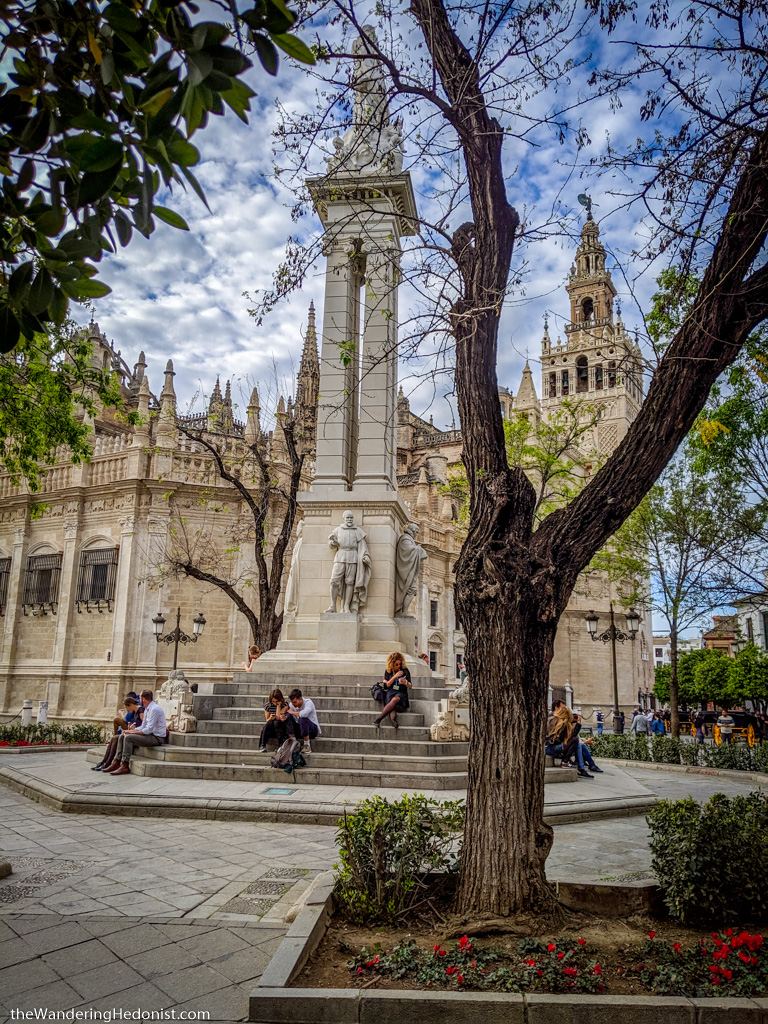
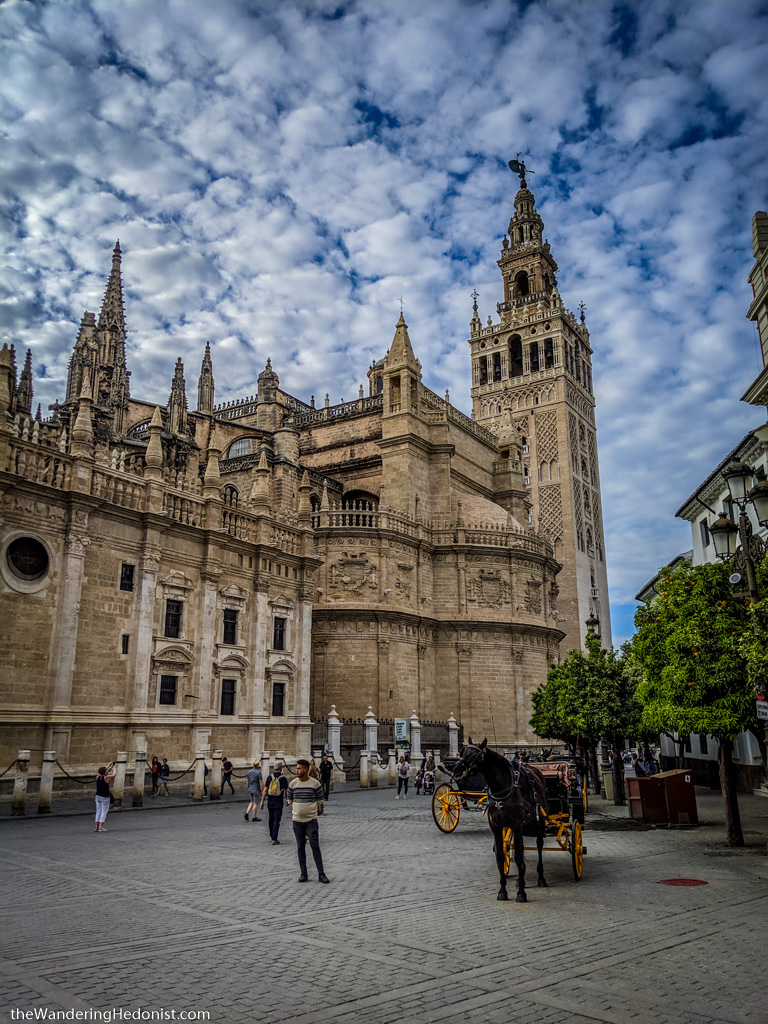
Real Alcazar of Seville
Along one side of the Seville Cathedral you’ll notice a menacing three story stone wall topped with parapets and enormous armored doors. It took us a while to realize there was a palace and expansive gardens hidden behind. The palace is heavily Moorish influenced with intricate patterns and Islamic style architecture. It is stunning. Outside are dozens of gardens that you can get lost in. Tiled fountains and a hedge maze. Large pools filled with coy or shaded gazebos. Even with the crowds I often felt on my own. We arrived at 2pm and regretted not allotting more time to explore. I advise a couple of hours for the palace and at least that much for the gardens to wander around and chill. There’s a cafe to grab snacks and drinks. Pro tip, buy tickets online and skip the enormous line. We couldn’t do it on our phones, maybe a laptop would have worked? We waited 30 minutes in the direct sun in the off season.
For Game of Thrones fans you might recognize this palace as the primary setting for the House Martell in Dorne. This is where Ellaria stabs Prince Dorian (and other scenes with Dorian) and where the Sand Snakes fight Jaime and Bronn in the gardens.
Plaza de Espana
We originally thought this was a palace but the actual buildings are government buildings closed to tourists. The main attraction is the square out front built in 1928 for the Ibero-American Exposition of 1929. The size of five football fields, it boasts two large towers and a curved waterway with row boats to tool around in and bridges connecting the square to social spaces and shaded walkways around the buildings. Along the base of the building is a series of tiled seating areas each in the theme of a local province of Spain. All of the railings and bridges are intricately tiled, very beautiful.
Directly beside the plaza is the Parque de María Luisa, an enormous park with shaded lanes, ponds with ducks and swans, fountains, and trees. It’s a romantic place to spend the day wandering around. I suggest bringing a bottle of wine. Actually true of all the parks. We kept saying it but always forgot.
We also rented a two person bike/car and biked around a bit. It was fun but I suggest just going for the half hour. There’s no lock so you can’t really park it and explore so you’re kind of stuck in the bike until you return it. Fun though.
Seville Cathedral
This place is ridiculous. Built on the former city mosque, the cathedral is the largest gothic cathedral in Europe (10th largest church in the world) and at 124,000 sq ft was larger than the Hagia Sophia which had been the larges cathedral for a thousand years before. It dominates the skyline from every location.
Inside it houses the remains of Christopher Columbus and his son. Personally I think Columbus was a psychopathic mass murderer who should be vilified, not honored in a church, but no one is asking me.
I mean, it is impressive. But like all things jewel encrusted and monolithic, all I see is the misery and domination of an entire race of people and the destruction of their homeland. Brutal and incomparable greed. All in the name of a person who shunned wealth and violence. Nauseating levels of hypocrisy. But I suppose most of the world’s wonders were born through the misery and deaths of slaves and prisoners. This, I’m sure, is no exception.
Semana Santa
Another interesting tradition unique to southern Spain is Semana Santa or Holy Week, conducted the week before easter. The church is still a big deal in southern Spain and there are ancient traditions observed throughout the region. The most notable of these are the parades staged throughout the week where massive altar constructions are moved from the churches on the backs of teams of carriers and paraded through the streets as floats. Teams practice for months to work in unison to carry the heavy structures. We got to see teams practicing while we were there in early March. Another interesting aspect of Semana Santa are the costumes. The capirote or coroza is worn, a colored robe along with a tall pointed conical hat with a mask covering the face, and sometimes a cape. Originally these were prescribed by inquisition to pronounce a person’s punishment under the law. Later these costumes were adopted by the catholic orders and worn by people paying penitence for their sins. Various orders use different colored outfits.
Americans might more closely identify these outfits with the KKK who appropriated the general style and funded their organization by selling them to members but who have no affiliation with the original use. In fact the second manifestation of the klan targeted catholic people like Jews and other minorities.
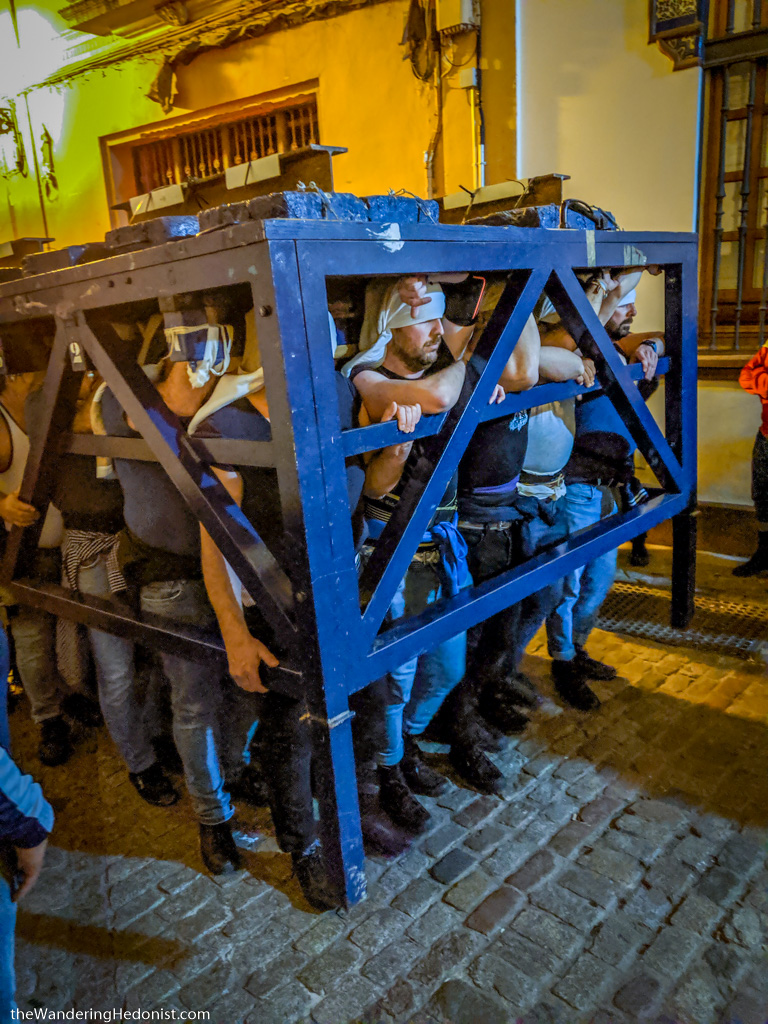
We saw teams of people practicing for the parade throughout the week. Looks like hard work. They wear these headcovers with padded loop across their shoulders for the structure weight to rest on.
Metropol Parasol
An 85ft wooden structure completed in 2011 by Jürgen Mayer. While constructing a parking garage for the originally planned shopping structure in 1990, ruins dating to the Roman and Al-Andalus eras were discovered and construction halted. A competition was later held for a new structure. The ground floor houses the ruins while an elevated plaza is on the first floor. Two more levels with a restaurant and views are located within the upper structure.
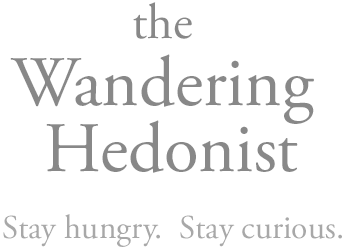
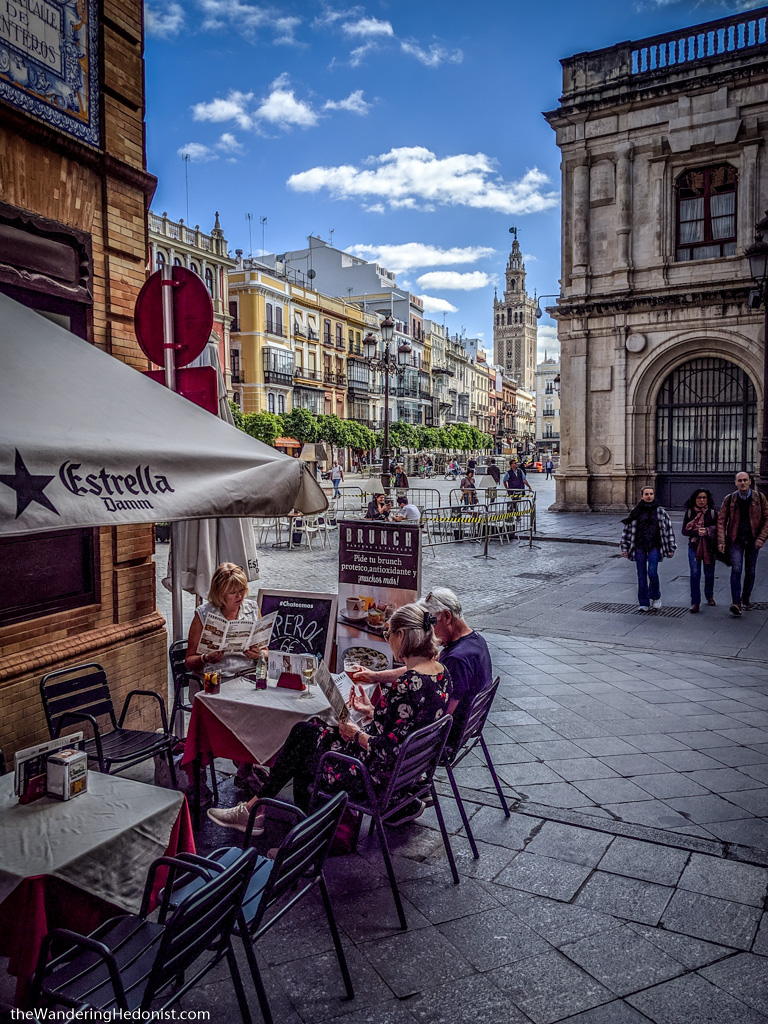


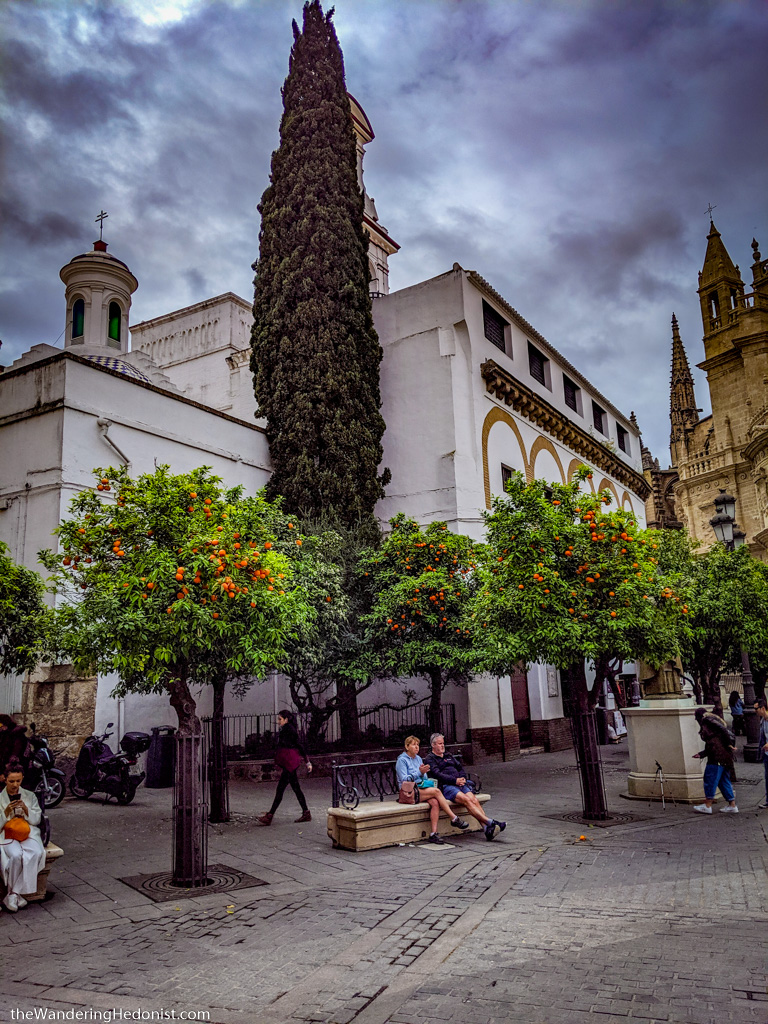

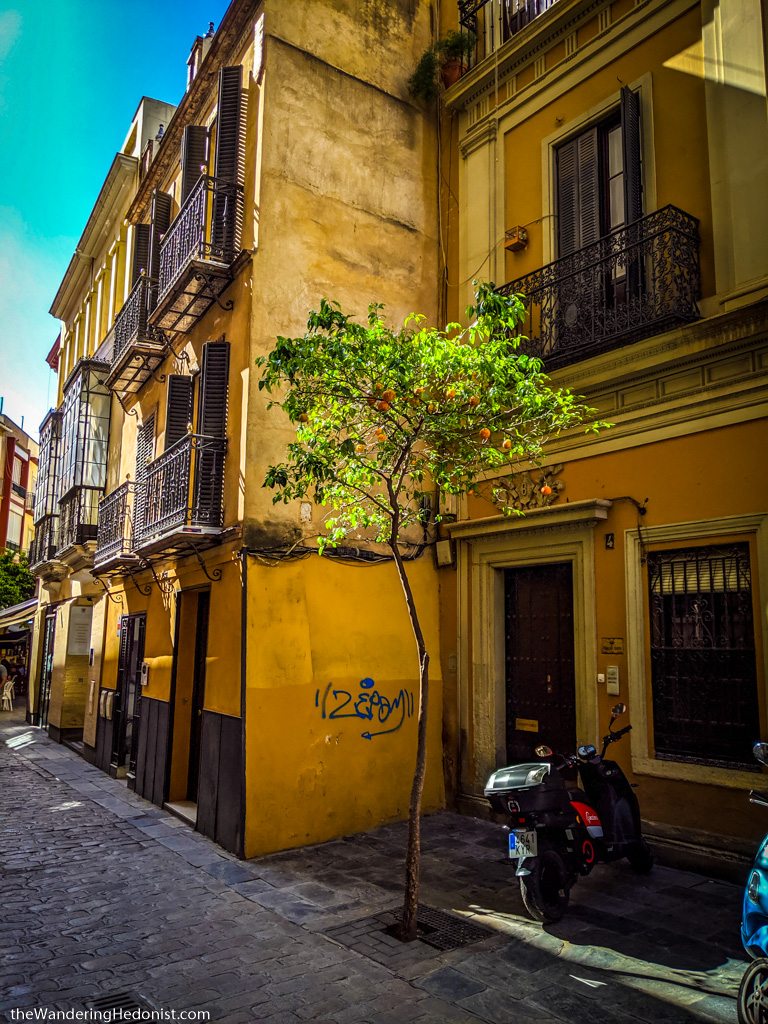








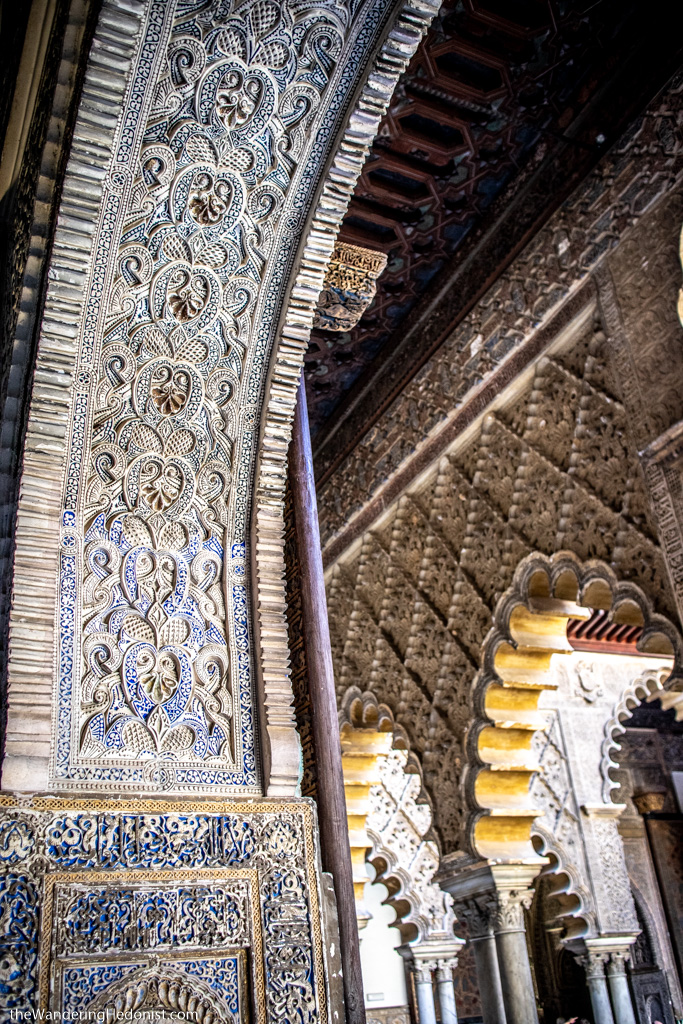


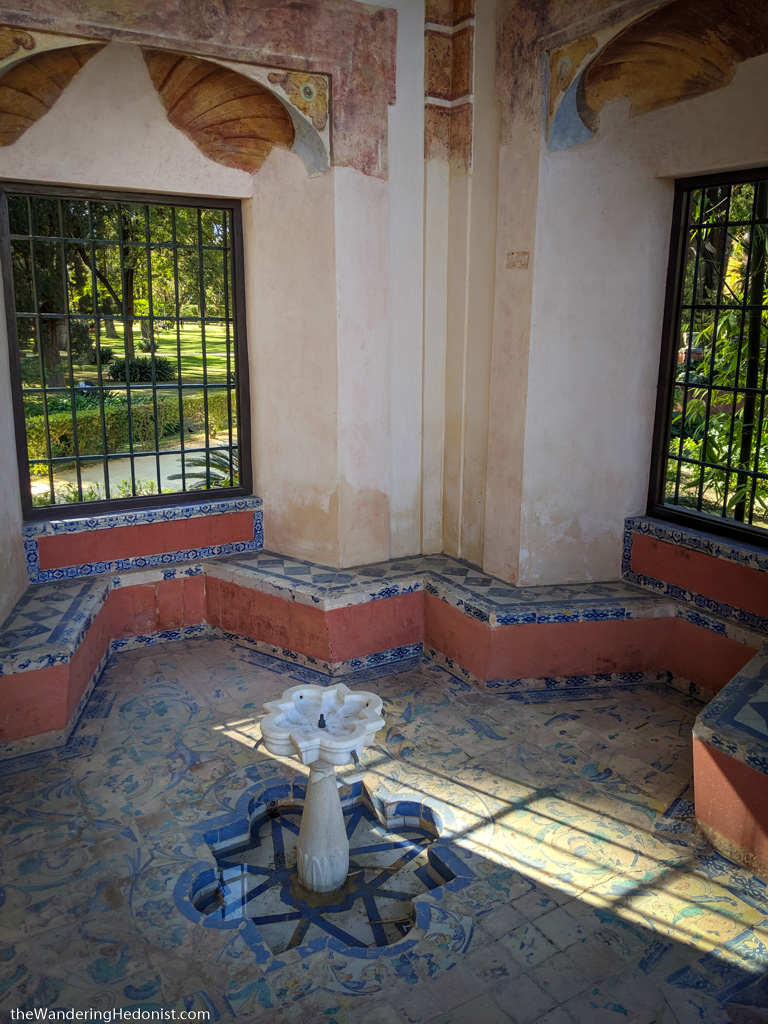

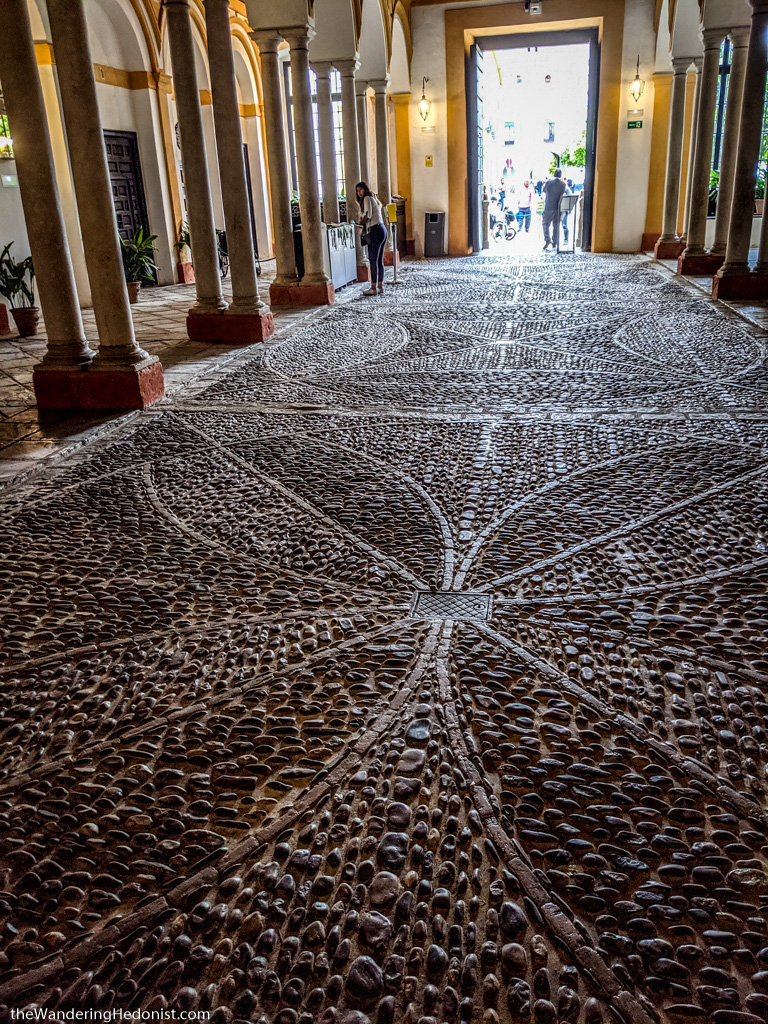


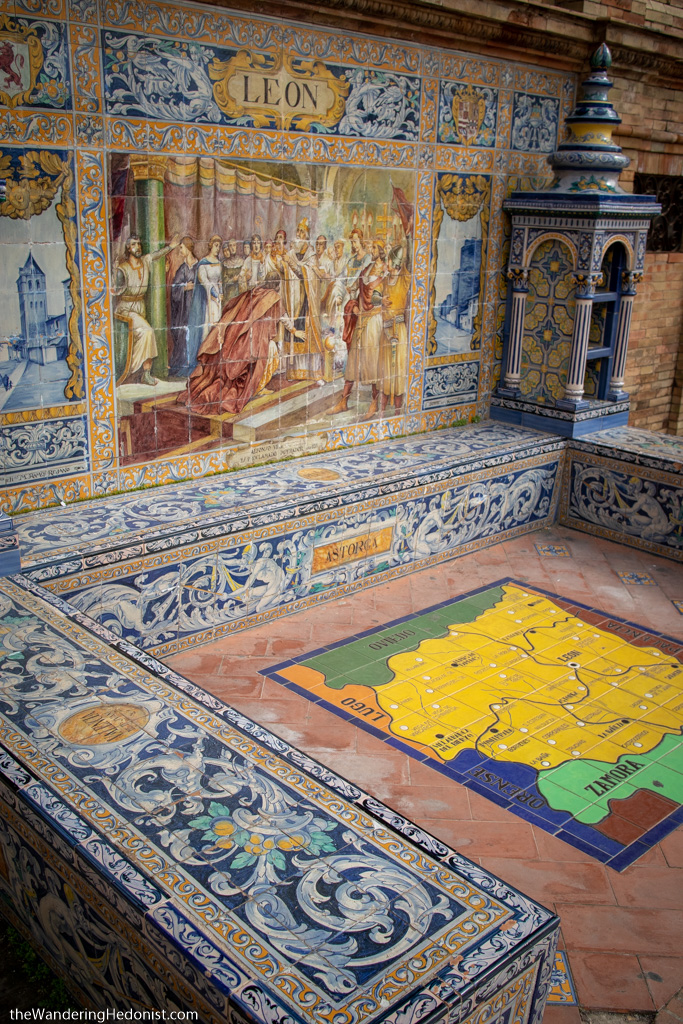


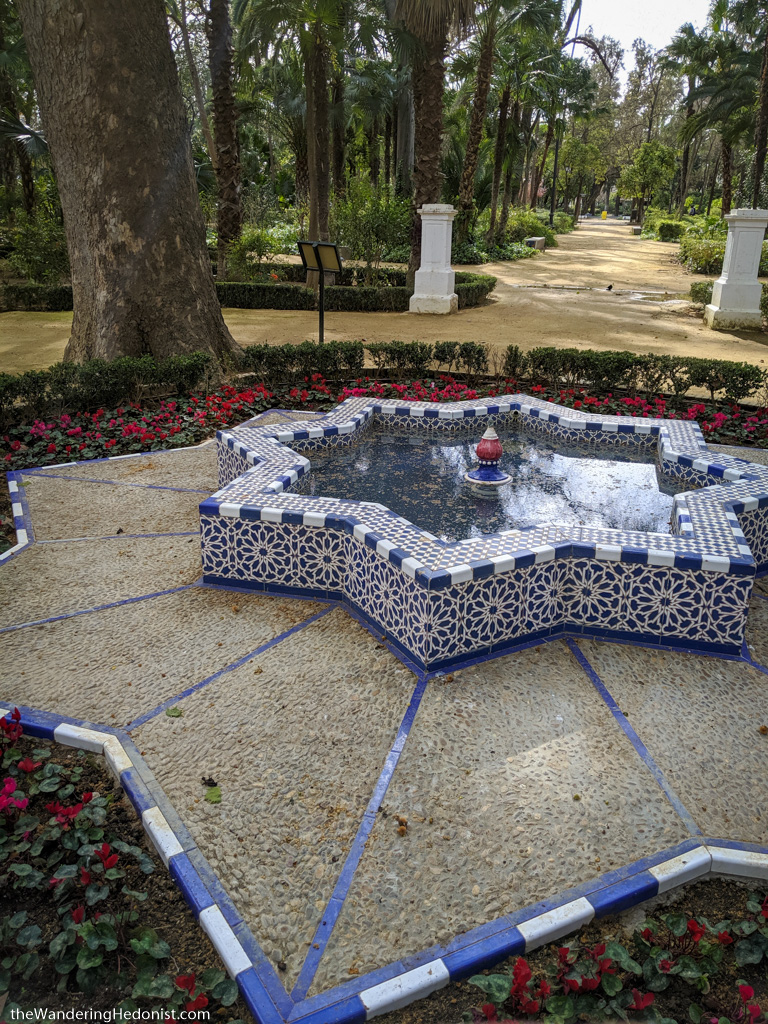





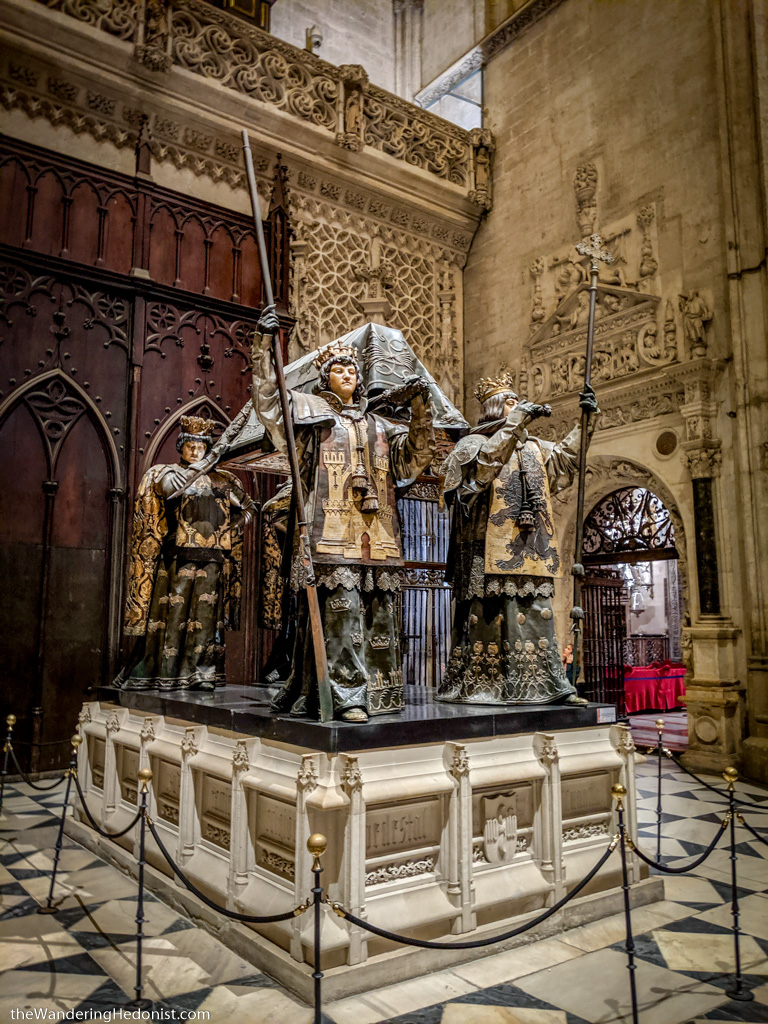
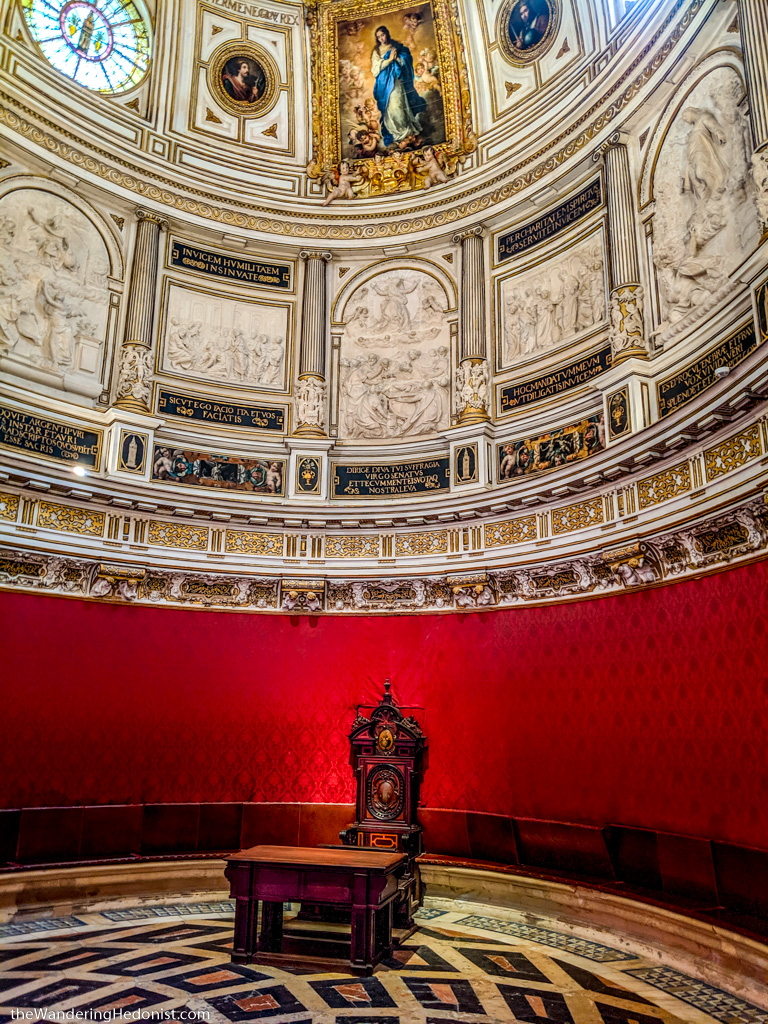



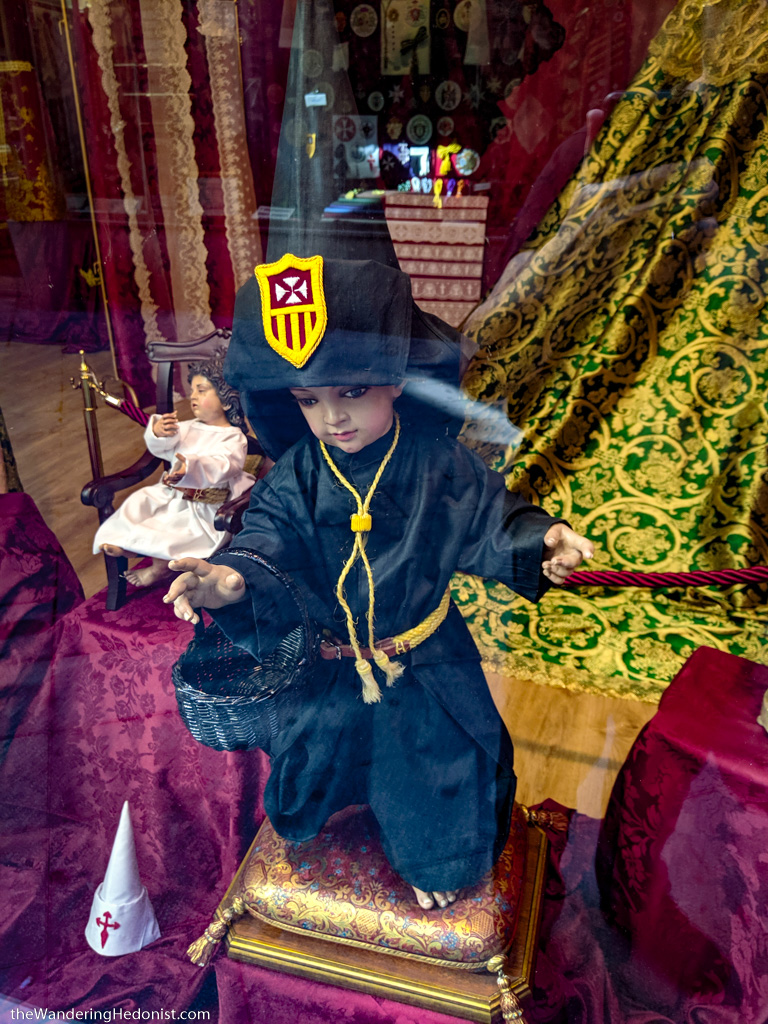
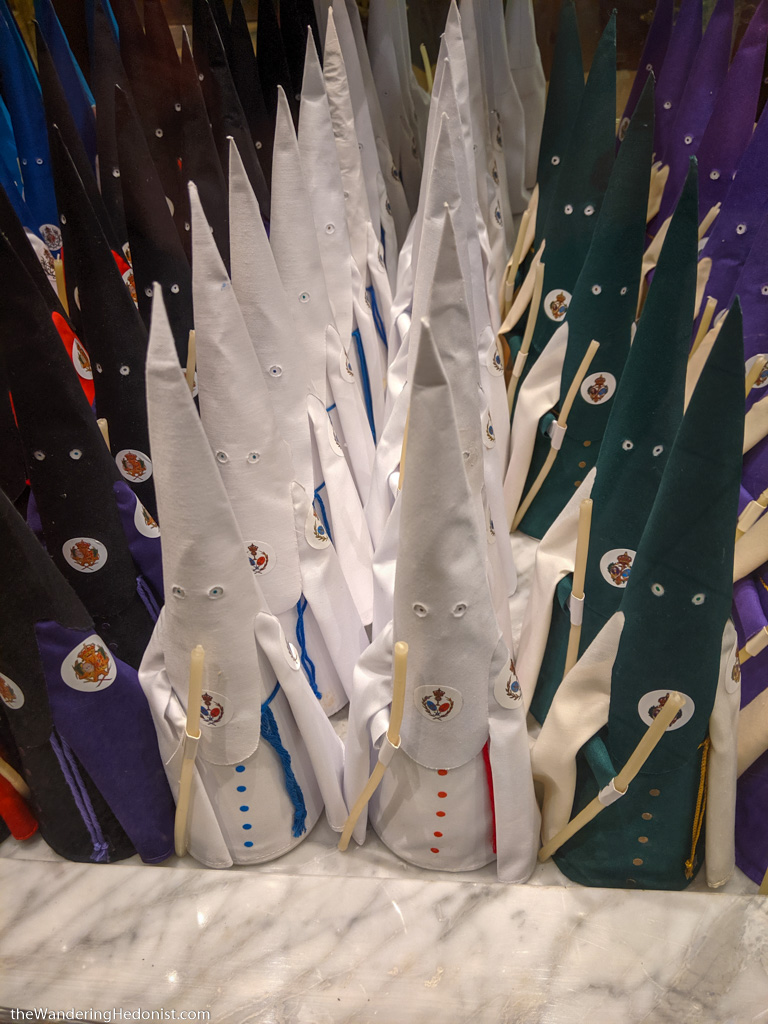
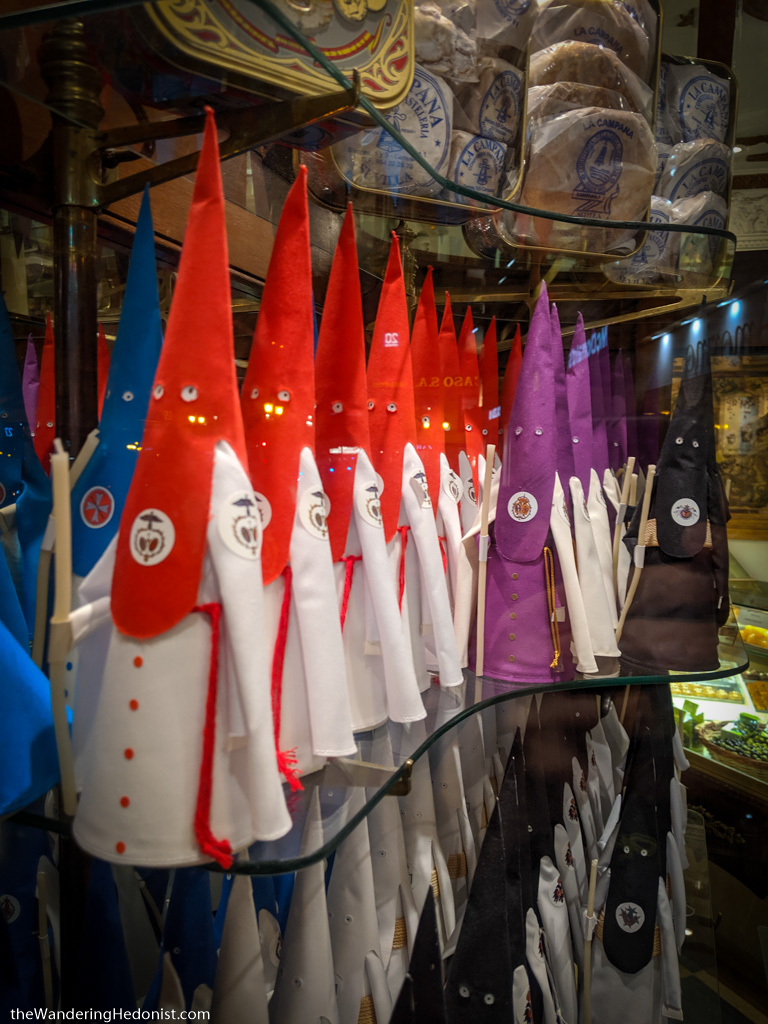


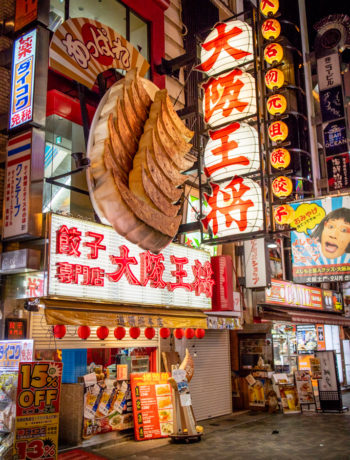
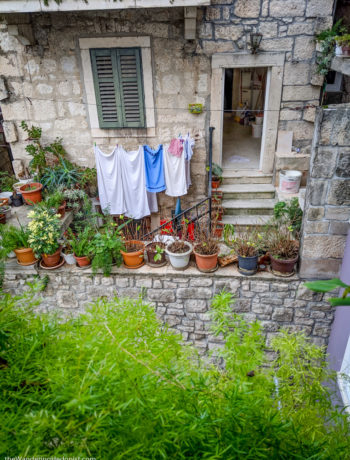
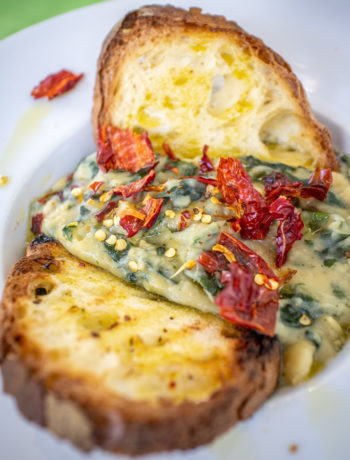
No Comments